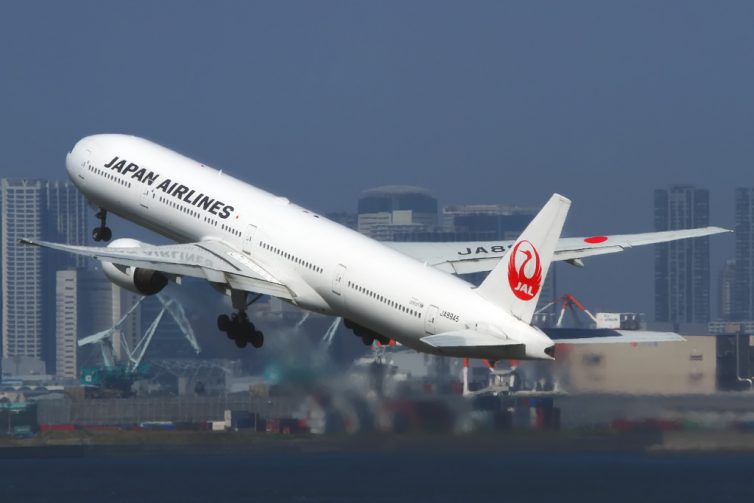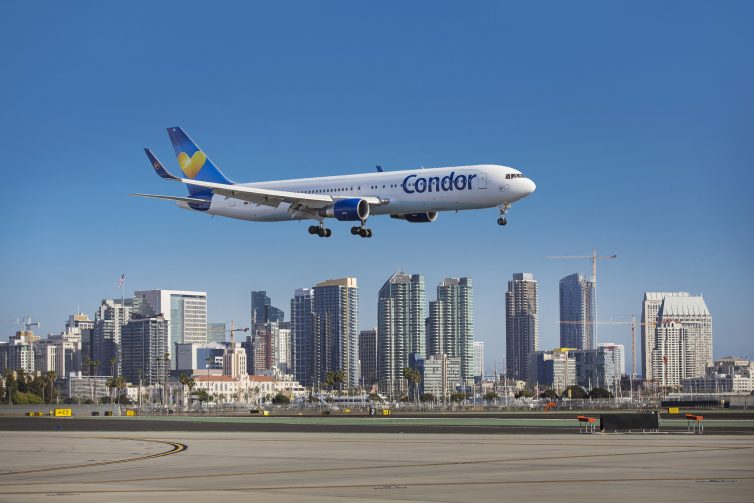
Condor inaugural San Diego arrival – Photo: San Diego County Regional Airport Authority
Recently, I had the opportunity to take my first ever inaugural flight. Condor inaugurated twice-weekly service nonstop from Frankfurt to San Diego and they were kind enough to allow me to tag along. This was a special trip for me, as I rarely get the opportunity to fly internationally in anything but economy class, as more opulent flying is typically not in my budget.
-
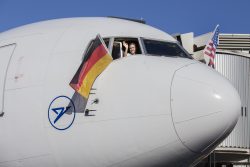
-
Condor inaugural San Diego arrival
-

-
Inaugural celebration – Photos: San Diego County Regional Airport Authority
-
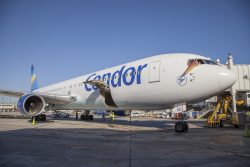
-
Condor inaugural San Diego arrival
Not only was this a big deal for me, but this new connection to Europe is a big deal for the city of San Diego and the 3 million plus people in the metropolitan area. With the new flight, Condor becomes just the second nonstop connection to Europe, and first by a leisure airline.
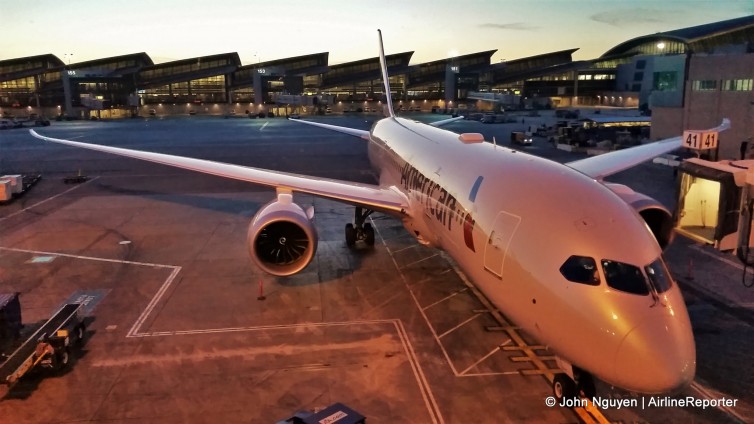
An American Boeing 787-8 (N812AN) at LAX; the 787-9 is a stretched version of the -8
This story has been updated to include new information about the availability of premium economy and anticipated dates for domestic operations.
American Airlines today announced new details and routes for its newest addition to the fleet, the Boeing 787-9 Dreamliner (789), which is set to arrive in the last quarter of this year. While American already operates 17 Boeing 787-8s (788s), four of the stretched -9s, with new business class seats and a cabin configuration to include a new Premium Economy section, will be delivered by the end of December 2016, with a total of 22 on order.
The 789s will initially be based out of American’s home base, Dallas-Fort Worth Airport (DFW), and on November 4 will commence service to Madrid-Barajas Airport (MAD) and Sao Paulo-Guarulhos International Airport (GRU).
AirlineReporter has received exclusive details on the inaugural route the 789 will actually fly…
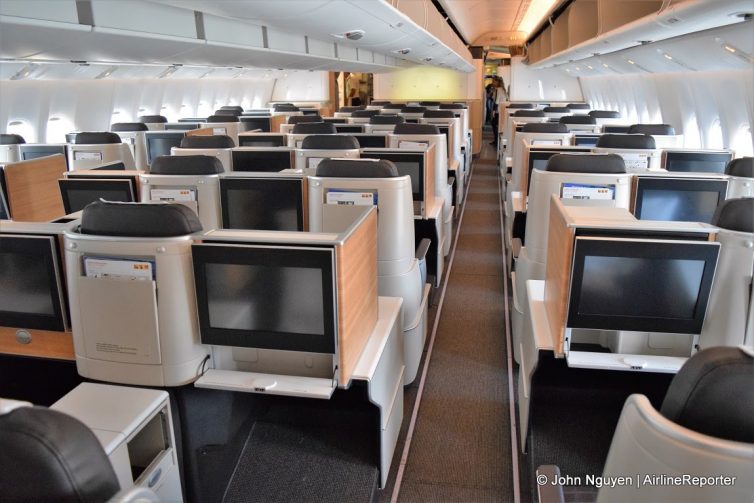
Main business cabin on the Swiss 777-300ER
On June 10, Swiss International Air Lines officially inaugurated its new Boeing 777-300ER (77W) on its first regularly scheduled daily service to the United States. The debut flight took off from Zà¼rich/Kloten Airport (ZRH) and arrived at Los Angeles International Airport (LAX). The 77W is the first Boeing product in Swiss’s mainly-Airbus fleet, and carries 55% more passengers than the Airbus A340-300 (343) it replaces on the ZRH-LAX route. Its first 77W, HB-JNA (delivered on January 29) with its special “Faces of SWISS” livery, made the flight.

A Swiss 777-300ER (HB-JNA) in special “Faces of SWISS” livery – Photo: Swiss
Swiss gave the public a CGI-based video preview of the all-new aircraft and completely redesigned interior, and AirlineReporter was the first to confirm the delivery date of HB-JNA. We were also one of the few media to be invited to LAX for the inaugural events to take a look with our own eyes. Were we disappointed?
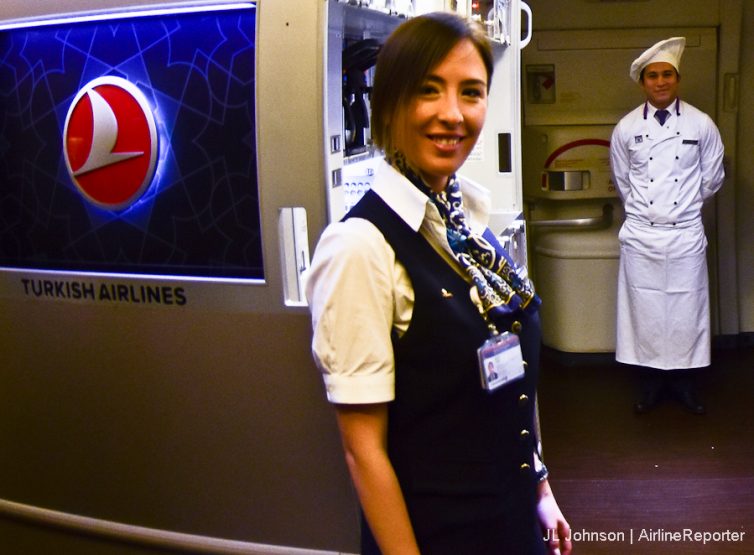
The first thing you see when boarding a Turkish 777
Turkish Airlines is, or should be, well known amongst AvGeeks for their hospitality and commitment to passenger experience. The airline has positioned itself as a “European carrier” which might raise eyebrows to those in the West. Most would reasonably assume Turkey to be a resident of an ambiguous neighborhood we Westerners label as the “Middle East.” For what it’s worth, about half of Istanbul, including the airport, the airline’s headquarters, and various operations are indeed on the European continent. Turkey, as it turns out, is a country divided between two continents, giving real meaning to the phrase “East meets West.” The European side is separated from the majority of the country (the Asian side) by a naturally occurring strait referred to as the Bosporus.
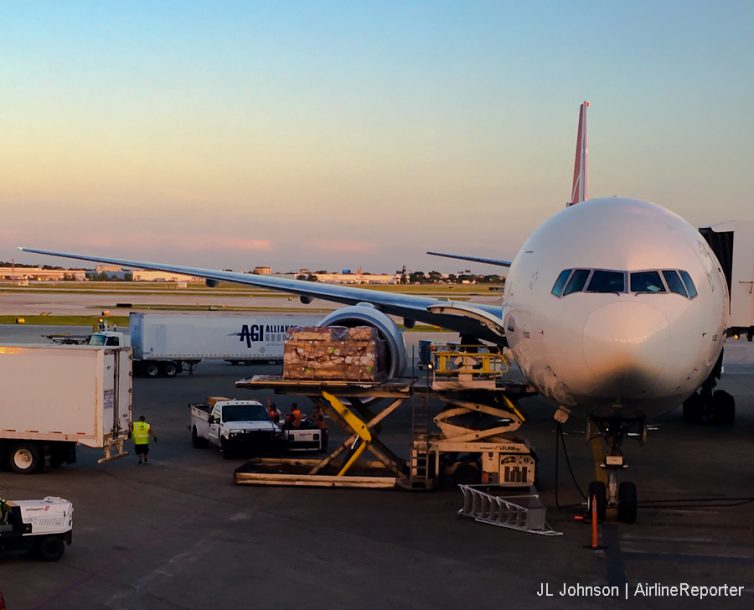
My 777-300ER for the ride from Chicago to Istanbul
Why does all of this matter? Because it gives Turkish Airlines a competitive advantage. It’s easier to go after the European carriers than try to compete in terms of obscenely lavish passenger experience offered by the big three Middle East airlines (ME3). And, let’s be honest. When we think of European carriers, is an overwhelming commitment to passenger experience something that comes to mind? Likely not. It is no wonder then that Turkish Airlines maintains the title of Best Airline in Europe, according to Skytrax.
So how does Turkish differentiate itself from the pack? By offering reasonably priced fares bundled with excellent service and gourmet food. Gourmet food on a plane? Some might think those concepts are mutually exclusive. I beg to differ…
Japan Airlines (JAL) announced last week that its newly-revamped Boeing 777-200ERs (772s) dubbed “JAL SKY SUITE 777” or “SS2” will debut on June 18 from Tokyo Haneda (HND) to Bangkok (BKK). Designated for regional flying, the SS2 will feature now-industry standard lie-flat seating in business class, a roomy premium economy section, and best-in-class nine-abreast seating in economy, going against the grain during a time when virtually every new refurbishment of 777s calls for ten-abreast seating.
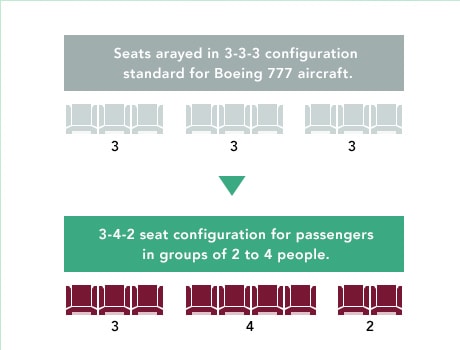
An illustration of the new economy seating configuration on JAL’s “SS2” Boeing 777-200ER – Image: Japan Airlines
What’s even more eye catching is JAL’s choice to go with an asymmetric 3-4-2 arrangement, while every other carrier uses 3-3-3 (well, when they do have nine across on their older planes). Where new premium seating is all the rage nowadays, JAL manages to remember the little people, and the economy cabin steals the spotlight…









